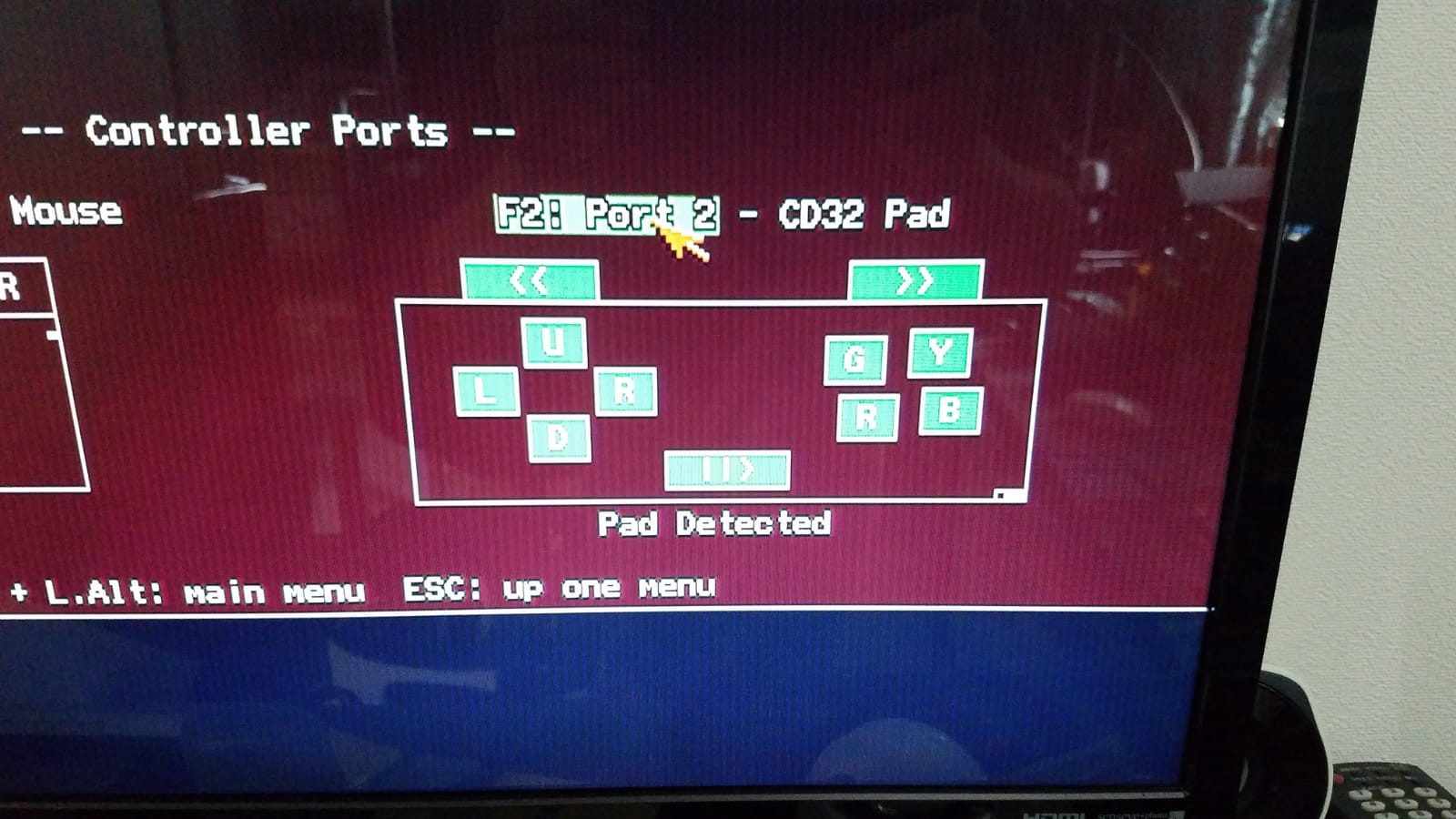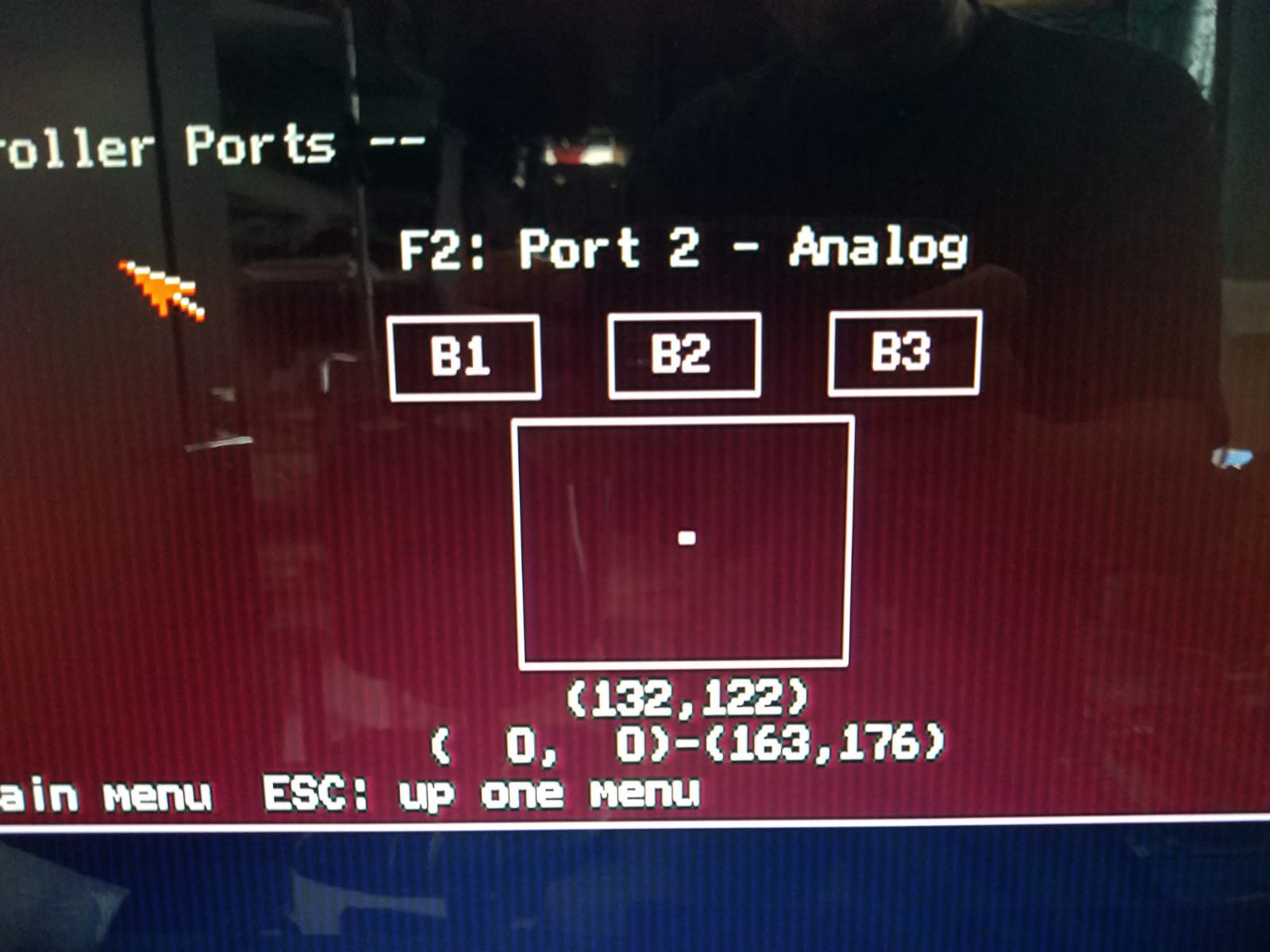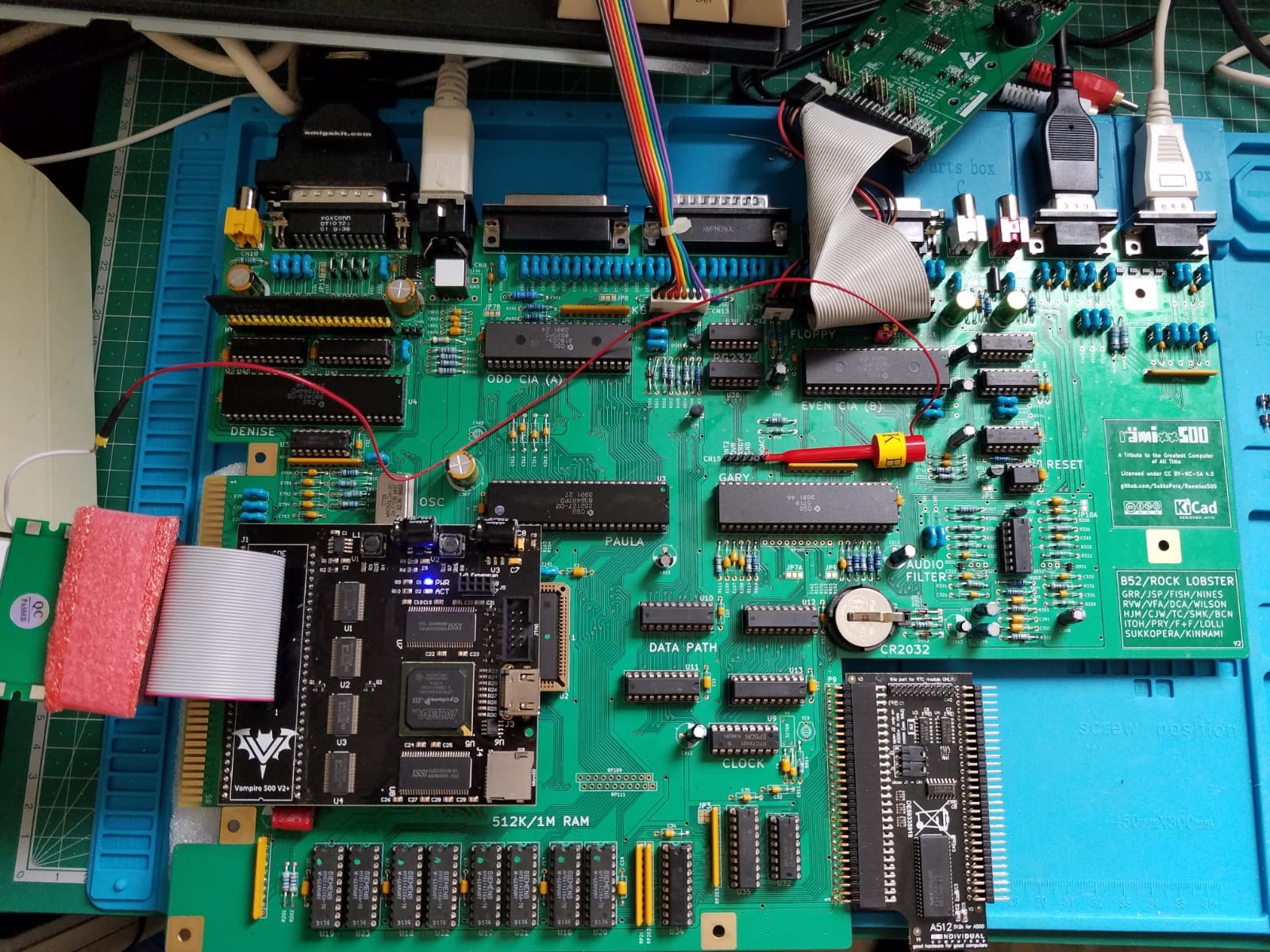The characterization test aimed to describe (characterize) the actual behaviour of the existing piece of hardware. The following verification of Ramixx500 V2 was executed:
- Internal Chip RAM (1 MB)
- Composite and RGB video outputs (with and w/o digital buffer for H- and V- sync)
- Stereo Audio output
- Trapdoor 0.5MB and 1MB Chip RAM expansion
- Keyboard and LEDs (plus onboard IDE activity function)
- RTC (onboard and on trapdoor)
- Parallel port
- Serial port
- Zorro slot (accelerator card HC508cr)
- Kickstart 3.1.4 and 3.2
- Internal and external floppy drives (mechanical and FlashFloppy)
- Integrated drive switcher
- Controller ports with Mouse/Joystick/CD32 Gamepad/Analog Paddles
- TF536 basic testing
- Vampire 500 V2+ basic testing
- 12h burn-in test with Vampire 500 V2+
- Raspberry Pi 0-based RGBtoHDMI adapter
- Original shielding/case fit
Conclusions
To conclude, the major contributions of this work are as follows:
The presented power-aware design and test methodology provide an insight into the impact of within silicon and within PCB layout variation. Information regarding CAD versus silicon correlation derived from the test results helps to efficiently optimize CAD models.
A test circuit for accurate characterization of delays in clock and data paths for evaluating the extra timing margin available in silicon has been considered. Understanding the sources of extra margin aids in precisely establishing de-rate added during sign-off that fail-free operation can be ensured while deriving maximum performance from a given circuit.
Future Works
Based on the lessons learnt concerning layout design and chip tests for electrical and thermal characterization, in the future, we may consider implementing a comprehensive reliability/performance management strategy. Further increase in energy savings can be achieved by replacing Fast Page DRAM (440mW @ 5V per unit, in total 3.52W for 1MB) with SRAM (1W @ 5V in total), for example. Moreover, we have overcame known mistakes and limitations hence ensuring the original concept of "Rock Lobster".
References:
Benchmark / Diagnostic:
- Amiga Test Kit 1.17
- SysInfo 4.4
- Diagrom 1.2.1
Expansion & Accessories:
- Vampire 500 V2 [GOLD2.12] (17.03.2020)
- Terrible Fire TF536 (Rev.2b 2019)
- HC508cr (MK II)
- Original Commodore Amiga 500Plus Motherboard Rev8A.1 and plastic case
- RGBtoHDMI (20210529_777ea4f Release)
- Commodore Amiga 1010 external floppy disk drive
- Internal 3.5" floppy disk drive CHINON FB-354 Rev.E (1991)
- Internal 3.5" floppy disk drive PANASONIC-MATSUSHITA JU-253-033P (1991)
- (Gotek) FlashFLoppy Drive Rev.1.1 (Nov 2017) + FlashFloppy firmware 3.27
Power Supply Unit:
- XP Power ECP40UT01 (40W, 5V/7.8A, 12V/2.6A, -12V/0.5A)
Tools & Equipment:
- Weller WES51 Iron soldering station
- W.E.R. 858D SMD rework station
- Oscilloscope Tektronix TBS1052C
- BenQ LCD Monitor G2420HD (ET-0027-B) October 2009 Rev. 00-132-BA [HDMI/VGA]
- Sharp LCD TV Aquos LC-22K3 [HDMI/VGA/CVBS]
- Logicool Stereo Speakers Z120
Chipset:
- CPU: ST TS68000CP8
- ROM: 29F400TC-70PFTN / AM27C400-105DC
- FAT AGNUS: CSG 8375 390544-01 (PAL)
- PAULA: CSG 8364R7PD
- GARY: CSG 5719
- CIA: CSG 8520PD
- DENISE: CSG 8373R4PD + hybrid video circuit Commodore 390229-03
- RAM: SIEMENS HYB514256A-70 (70ns) / Trapdoor exp. ELITEMT M11B416256A (25ns)
- AUDIO: TL084CN (RC filter and cutoff frequency as per standard A500 Rev8A.1 schematic)
- KEYBOARD: MOS 6570-036
- Logics: all 74LSxx replaced by 74HCTxx
Operating System:
- Hyperion AmigaOS 3.1.4
- Hyperion AmigaOS 3.2
- Hyperion Kickstart 3.1.4 and 3.2
Storage:
- 3.5" Floppy discs MAXELL MF2-DD (2020) [DF0: / DF1:]
- SanDisk Extreme Pro USB 3.0 128GB [DF0: / DF1:]
- CompactFlash SanDisk Ultra 8GB / Transcend 1GB 133x [DH0: / DH1:]
Condition:
- Still air room temperature, natural convention
- Min / Max temperature 24.3° / 27.7° Celsius
- Min / Max humidity 54% / 78% Air pressure 1009 millibars
- Nominal AC voltage 100V / 50Hz (Tokyo, Eastern Japan)



 Edoardo AUTERI
Edoardo AUTERI
Discussions
Become a Hackaday.io Member
Create an account to leave a comment. Already have an account? Log In.